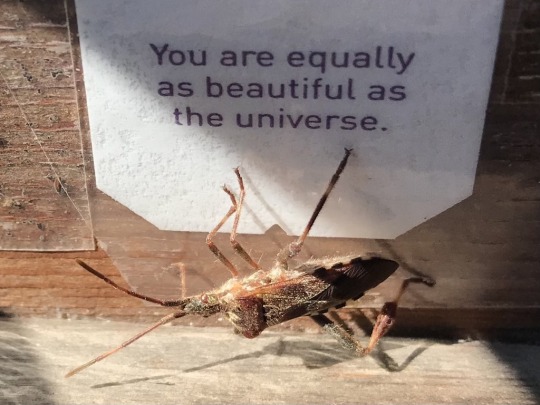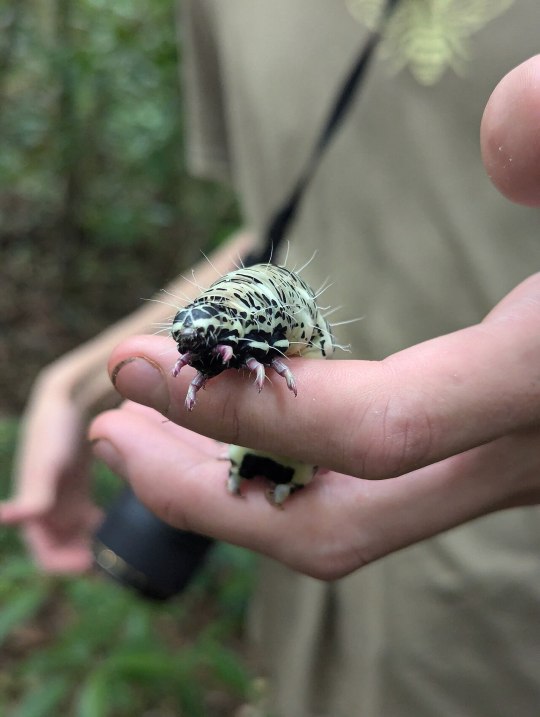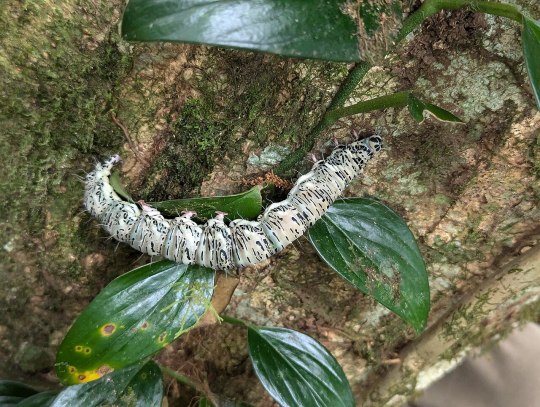Don't wanna be here? Send us removal request.
Text

mirasaura grauvogeli
new drepanosauromorph just dropped
111 notes
·
View notes
Text

[https://www.inaturalist.org/observations/97380134] Western Conifer Seed Bug || Leptoglossus occidentalis
30 notes
·
View notes
Text

[https://www.inaturalist.org/observations/18905320] Barred Owl || Strix varia Observed in United States Least Concern in location of observation
18 notes
·
View notes
Text

[https://www.inaturalist.org/observations/187951017] Guinea Paper Wasp || Polistes exclamens Observed in United States No Conservation Status
enjoying a sweet treat :>
76 notes
·
View notes
Text
Sometimes being in environmental law means that your schedule for the afternoon gets completely thrown because a colleague standing the middle of some woods calls to tell you that there’s gunk in the stream and it smells bad.
9K notes
·
View notes
Text

[https://www.inaturalist.org/observations/74778731] Woodchat Shrike || Lanius senator Observed in Spain Near Threatened in location of observation
72 notes
·
View notes
Text
i just rescued a pill bug they’re gonna reward me with a million pill bucks i’m gonna be a fucking pillionaire
35K notes
·
View notes
Text

Crafty Fishing Spider (Dolomedes facetus)
Observed by davidgwhite, CC BY-NC
53 notes
·
View notes
Text

[https://www.inaturalist.org/observations/119923333] Eurasian Griffon || Gyps fulvus Observed in Turkey
77 notes
·
View notes
Text
THEY FOUND THE WHITE WITCH CATERPILLAR! THIS IS NOT A DRILL!


For context: the white witch is one of the contenders for the largest moth in the world (biggest *wingspan*--loses to the atlas in terms of wing surface area, and loses to the regal for weight). It has a huge range, and the adult is fairly common.

But no one had ever seen a caterpillar. At all. There were only guesses as to what it might look like and what it ate. until this year. These are some of the first images ever taken of it!!
34K notes
·
View notes
Text



[https://www.inaturalist.org/observations/201704649] Great Gray Owl || Strix nebulosa Observed in Russia Least Concern in location of observation
62 notes
·
View notes
Text
3-5 turkey vultures will soon be dispatched to your location.
12K notes
·
View notes
Text

Back in 1939, fossil collector Louis Grauvogel discovered a couple of reptile fossils in Middle Triassic-aged deposits (~247 million years old) in eastern France. A large preserved structure was noted above the animal's back, but for many years it was interpreted as an unrelated fish fin, insect wing, or plant frond.
It was only when the State Museum of Natural History Stuttgart acquired the specimens in 2019 that they were recognized as representing something very special: a long-sought-after relative of the bizarre and enigmatic Longisquama!
Mirasaura grauvogeli grew to around 30cm long (~1') and was, if anything, even stranger than its relative. It had humped shoulders, grasping limbs, and a bird-like head with large forward-facing eyes and a long pointed snout that was toothless at the front, probably used to probe for small invertebrates in cracks and crevices.
But most strikingly it had up to 20 tall structures overlapping along its back to form a sail-like crest. Although they were superficially feather-like in shape with preserved melanosomes that resemble those of birds, structurally they weren't feathers at all – but they also weren't modified scales. Instead these appear to have been an entirely novel type of skin appendage, made up of continuous sheets with a midline shaft and a corrugated texture.
The crest was probably used for visual display, and 80 additional fossils of isolated crest structures suggest they were regularly shed and regrown.
Along with Longisquama, Mirasaura appears to have been an early member of the drepanosaur lineage – a group of wonderfully weird tamandua-like reptiles whose evolutionary relationships are still disputed, with different studies currently recovering them as either a unique early offshoot of the diapsids or as archosauromorphs.
(Interestingly, a specimen of Drepanosaurus reportedly preserves some soft tissue on its back that may also be one of these strange new crest structures. Drepanosaurs just keep on getting weirder and weirder and I love them.)
———
NixIllustration.com | Tumblr | Patreon
References:
Renesto, Silvo, et al. The taxonomy and paleobiology of the Late Triassic (Carnian-Norian: Adamanian-Apachean) drepnosaurs (Diapsida: Archosauromorpha: Drepanosauromorpha): Bulletin 46. Vol. 46. New Mexico Museum of Natural History and Science, 2010. https://nmdigital.unm.edu/digital/collection/bulletins/id/1261/
Spiekman, Stephan NF, et al. "Triassic diapsid shows early diversification of skin appendages in reptiles." Nature (2025): 1-7. https://doi.org/10.1038/s41586-025-09167-9
Wikipedia contributors. “Mirasaura” Wikipedia, 27 Jul. 2025, https://en.wikipedia.org/wiki/Mirasaura
907 notes
·
View notes




